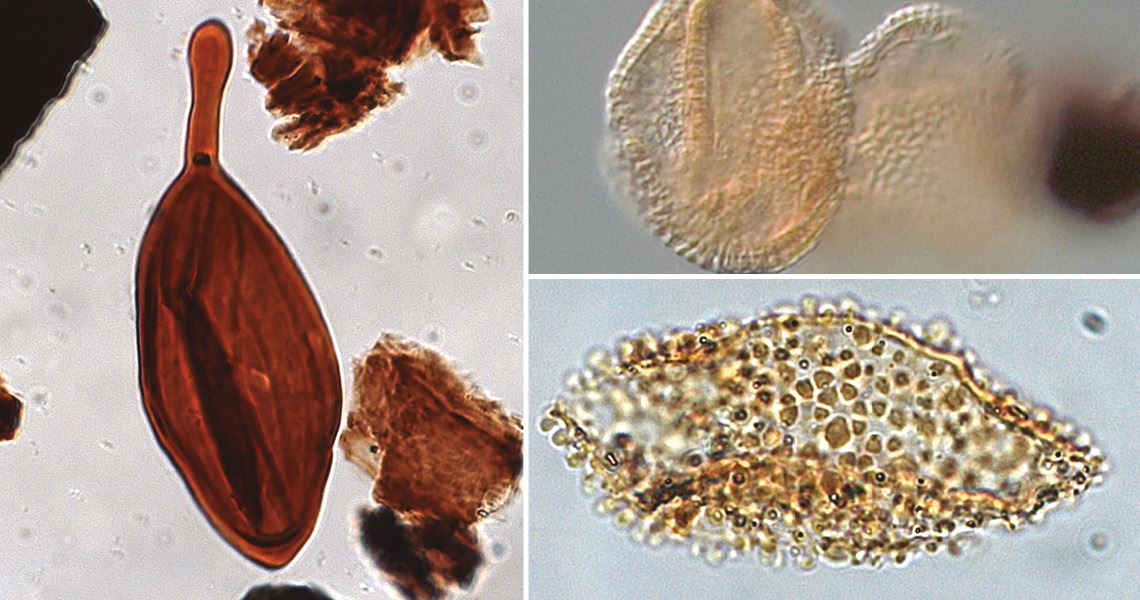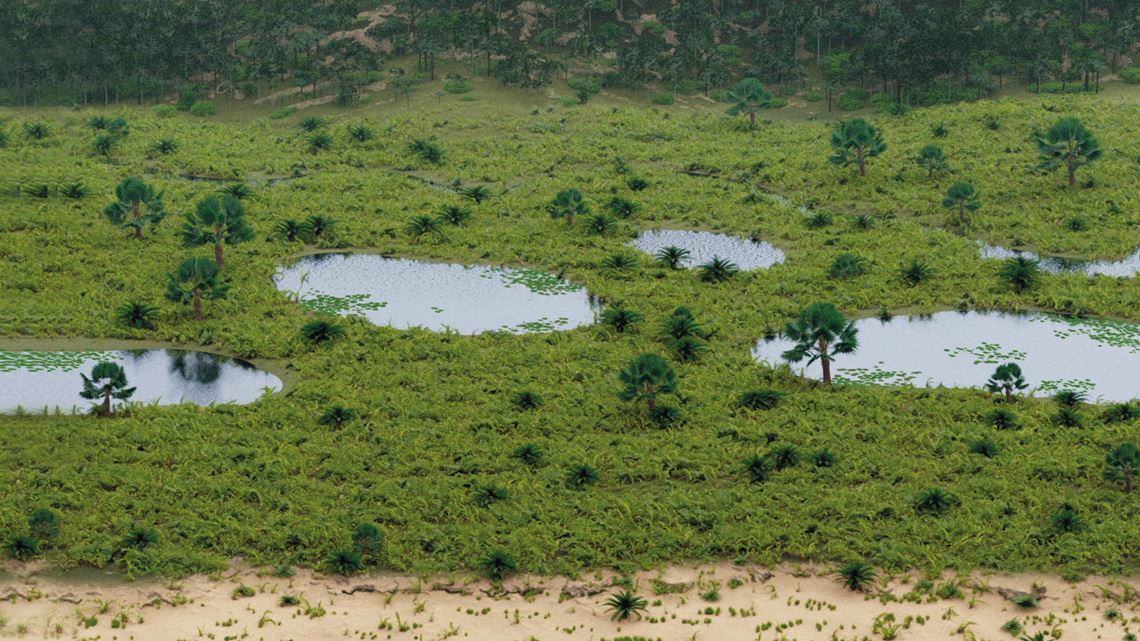One hundred and twenty million years ago, the landscape in what is now North and Northeast Brazil was characterized by xerophytic vegetation—shrubs adapted to a predominantly hot and arid climate. The diversity of plants and ecosystems began to expand some 5 million years later, when moisture levels in eastern areas of South America began to rise, according to a study published in the journal Scientific Reports in July.
The study lists two factors that contributed to the increased availability of water in the region and consequently stimulated the growth of lowland and montane rainforests: the formation of the South Atlantic Ocean, created by the separation of South America and Africa, previously joined in the former supercontinent Gondwana; and the greater influence of the Intertropical Convergence Zone (ITCZ), a meteorological system in the tropics that contributes to wind circulation and humidity and rainfall regulation near the equator.
The conclusions are based on the analysis of 79,000 pollen and spore fossils collected from eight sedimentary basins in the states of Pará, Maranhão, Ceará, Rio Grande do Norte, Sergipe, and Espírito Santo. The set of microfossils was collected by a team from the Center for Research, Development, and Innovation (CENPES) at Petrobras, a partner in the study. These basins all contain sediment from the neo-Aptian geological age, which encompasses the time between 115 million and 113.2 million years ago.
“In a short time during the neo-Aptian, transformations occurred that changed the entire history of the planet,” says Marcelo Carvalho, a paleontologist from the National Museum at the Federal University of Rio de Janeiro (MN-UFRJ) who led the team behind the study. “When the separation of South America and Africa intensified, deeper marine environments were formed in North and Northeast Brazil, especially near the coast, and ocean circulations changed,” says the researcher. “These alterations, which are well documented in the scientific literature, occurred shortly before a change in the vegetation found in the basins studied.”

Marcelo CarvalhoSamples of the 79,000 fossilized pollen grains and spores used in the studyMarcelo Carvalho
The pollen and spore samples come from three contiguous neo-Aptian geological deposits: the pre-salt (the same that harbors oil in some areas off the Brazilian coast), salt, and post-salt layers. Each represents a different snapshot of the climates and environments that once prevailed in the basins. No marine elements were recorded in the pre-salt, an indicator that the sediment was not influenced by an ocean. The salt layer was formed by sea water evaporating in an environment that was becoming warmer and drier, leaving salt among the sediment as evidence of the phenomenon. The post-salt contains marine fossils, showing that water had returned to the environment as the level of the Atlantic Ocean rose. “In the samples from the basins, whenever we find the pollen Sergipea variverrucata, we know that we are dealing with neo-Aptian material,” explains paleontologist Natália Sá, who did a postdoctoral fellowship under Carvalho’s supervision and is one of the authors of the paper. “It is an index fossil for this geological period and is only found in that time period.”
Based on all the plant microfossils collected, Carvalho and his colleagues determined the main botanical families that composed the flora of the basins in the three neo-Aptian deposits. The study identified a dominant pattern: the amount of plants adapted to an arid climate, which at its peak represented 70% of the total, started to decrease among the samples from the post-salt layer, while species typical of wetter areas were expanding. It was at that time, according to the study, that lowland and montane tropical flora, plants able to live in extremely wet habitats (hygrophytes), and others that live in water (hydrophytes) began to spread in North and Northeast Brazil.
The transition from an arid to a wetter climate was a long process and the diversity found in the samples indicates that the influence of the ocean and the ITCZ was progressive. The basin in Espírito Santo in Southeast Brazil showed the smallest change in biome variety in the post-salt phase. The others, located closer to the equator and thus within the ITCZ’s area of influence, underwent more intense changes.
Carlos Jaramillo, a Colombian palynologist (a pollen and plant spore specialist) from the Smithsonian Tropical Research Institute in Panama who was not involved in the study, says the results are innovative because they combine a range of fields—climate change, botany, palynology, and geology—to trace the relationship between water availability and vegetation so long ago. In his opinion, understanding transformations in the past is useful to finding answers about how vegetation may be affected by climate in the future. “Modern global warming is rapidly bringing us closer to tropical climates similar to those of that era,” says Jaramillo.
Geologist Mitsuru Arai, a visiting researcher at the Center for Geosciences Applied to Petroleum (UNESPetro) of São Paulo State University, says that the work of his colleagues from the national museum has solved the puzzle of the tropical and equatorial region of Brazil and can serve as an example for scientists studying other geographic areas. “Models of paleoclimatic zones have been developed by various researchers, but most are highly theoretical or based on stagnant data,” says Arai.
Scientific article
CARVALHO, M. A. et al. Influence of the intertropical convergence zone on early cretaceous plant distribution in the South Atlantic. Scientific Reports. july 23, 2022.


